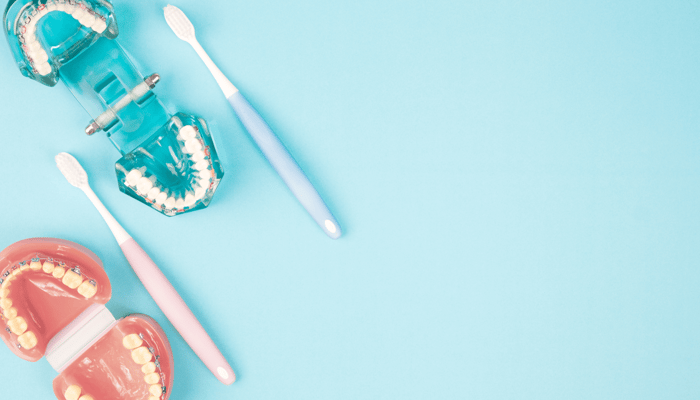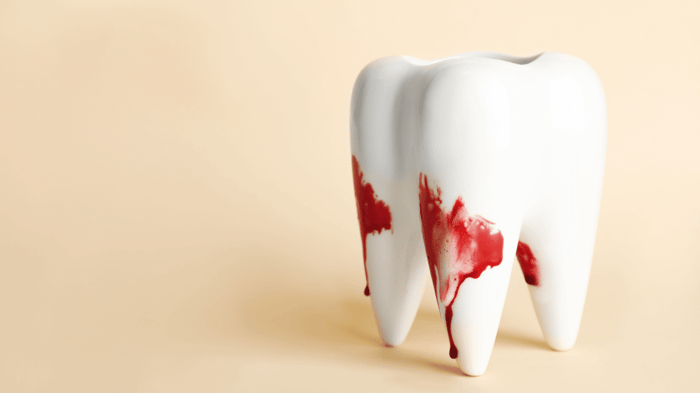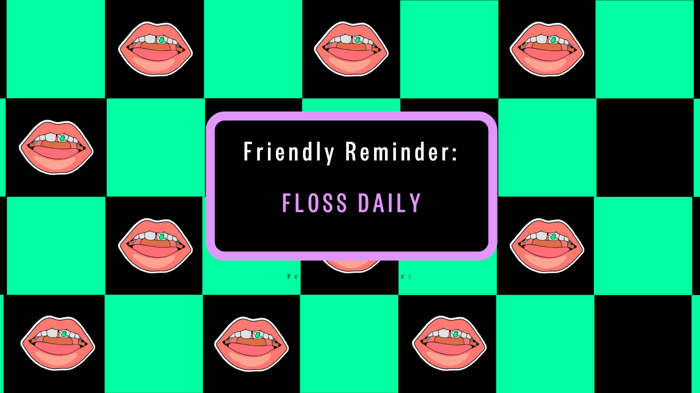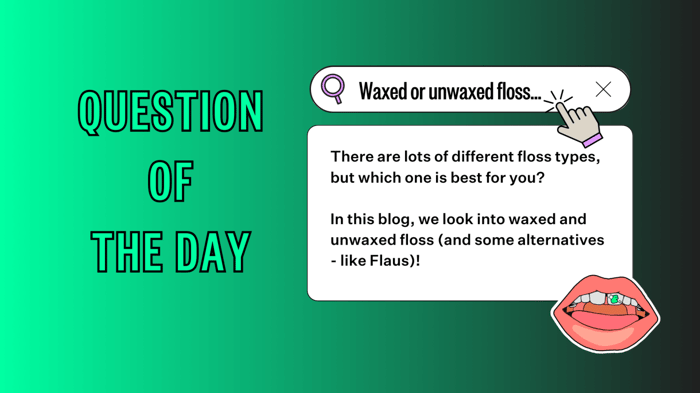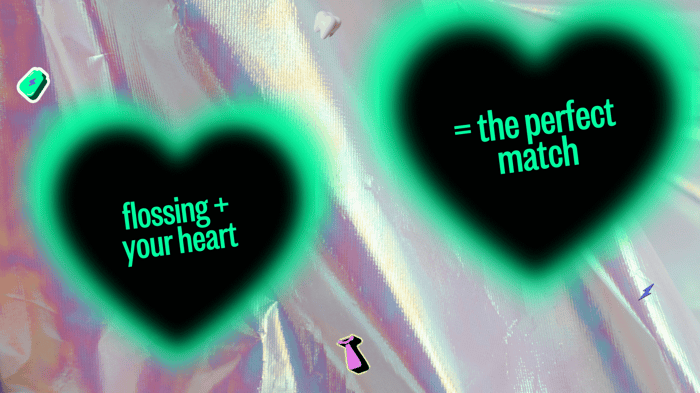Want to play two truths and a lie, oral beauty edition?
- Gums are gross
- Flossing sucks
- White gums are cute
We assume you caught the lie, but ICYMI, when your gums turn white it’s definitely not a good thing, and it can be pretty alarming.
So, what exactly does it mean when this happens?
The truth is, white and receding gums can be the sign of a few not-so-hot oral health conditions and a few lower-key issues, but some symptoms are more severe than others.
Looking for the download on white and receding gums? We’ve got you covered.
What Exactly Causes Gum Receding?
When you look in the mirror and your usually red gums are looking a little pale, it can for sure be scary. But don’t panic — knowledge is power, and we’re here to help give you the low-down on gum receding and what could possibly be causing this change (and how you can get back on the red gum train).
Gum receding is a fancy way of saying that your gums are slowly moving away from your teeth. While this does mean you’ve got more teeth to love, it’s not the best omen for your oral health.
Your gums can fade over time for a few reasons, and the good news is that not all of these reasons are serious, but the not-so-good news is that some of them are.
The most common cause is gum disease (we know — ugh). These bacterial infections destroy your gum tissue and the bones that keep your teeth where you want them (AKA in that great smile of yours).
Gum disease happens for a number of reasons, but not always because you’ve hit snooze on your oral routine. You can be the Tom Brady of oral care, brushing, flossing and washing daily, but sometimes genetics just make us more susceptible to gum disease.
We know, we know — that’s pretty unfortunate(and unfair). But if you’re aware that your genetics are leaving you susceptible to some #oralprobs, it might be the perfect motivation to take really good care of your mouth, and to see your dentist regularly (at the dentist’s office, we mean).
Of course, sometimes it is our fault if we’re lacking some good oral ;). Gum recession can come from a number of actions we’re doing:
- Brushing your teeth too hard, with a hard-bristle brush, or incorrectly
- Grinding your teeth and clenching your jaw
- Using tobacco
- Even your lip or tongue piercing can cause gum irritation
Do some of these things sound familiar? We aren’t judging. But it might be time to start rethinking the way you’re treating your mouth. Opt for a soft-bristled toothbrush and be nice to your teeth. We’re talking soft, gentle circles when you brush your teeth.
If My Gums Recede, Can They Come Back?
If only! Once your gums start to recede, unfortunately they can’t grow back. This is why prevention is key and flossing is clutch to making sure your gums stick around for the long haul.
If you think your gums might be receding, well, we can’t confirm or deny. But we can tell you to hit up your dentist (in a need-my-teeth-looked-at kind of way) to get to the bottom of it.
What Causes Gum Whitening?
Alright, we’ve talked about recession. Not the economic kind, but the my-gums-are-shrinking kind.
Now, let’s talk all things whitening — and not the sparkly-white-smile type.
If you’re dealing with gum whitening, there may be a few signs. You might start noticing those gums aren’t as red as they were before, along with a few other symptoms:
- Pain in your tongue
- Pain in your gums and jaw
- Loose teeth
- Swelling
- Gum bleeding
Bleeding and swelling and pain, oh my! Any of these symptoms should be an instant red flag (and we recommend listening to the red flags this time). All jokes aside, these symptoms can be uncomfortable — and a little unnerving.
While gum recession can be caused by some factors that are pretty low-key, like skipping one too many flossing sessions or grinding your teeth, gum whitening is usually a bit more concerning.
More often than not, gum whitening is a symptom of conditions like oral thrush, oral lichen planus, gingivitis, and canker sores. Oof. Alcohol and tobacco overuse can make your gums look cloudy, too.
It can also be caused by pre-cancerous dysplasia. This can be mild, moderate, or severe, but they’re all good reasons to take a trip to the dentist. Knowing how severe your dysplasia is can help you treat it and get your gums back to normal.
Speaking of which…
Will My Gums Ever Go Back to Normal?
Unlike receding gums, white gums can go back to the way they were — so feel free to breathe a big sigh of relief. We recommend keeping up with your normal (or a new and strict) oral care routine as the first step towards getting those healthy, red gums back.
We also recommend checking in with your dentist and making sure there aren’t any underlying issues causing your gums to turn white. Your dentist can help you determine if the cause is a lifestyle issue — like too much drinking and smoking or a sub-par oral hygiene routine — or something more serious.
How Can I Prevent Gum Recession and Gum Whitening?
We know you’ve heard it all before: but brushing and flossing is the best plan to prevent gum recession and whitening. Stick to a serious brushing routine in the morning and night with a soft-bristle brush (so you don’t further irritate your gums).
Follow each trip to the sink to brush your teeth with flossing. Or, if you’re team Flaus, with Flausing! We get it, flossing can be gross and time consuming — but it is as necessary as brushing your teeth, and it actually doesn’t have to be the most tedious and uncomfortable process in the world.
This is why we created Flaus — a plant-friendly electric flosser that is the first of its kind, and it’s as easy on the Earth as it is on the gums. Flausing makes flossing so easy that you won’t even mind doing it after each snack and meal (that popcorn kernel can no longer overstay its welcome). The days of skipping your much-needed flossing are no longer. Once you try Flausing, you won’t go back
After you floss (or should we say, Flaus), rinse with your favorite antimicrobial mouthwash. You can even grab a tongue scraper to help you remove bacteria and other particles (pro-tip: If you don’t have a tongue scraper, just grab a spoon — it can do the trick in a pinch).
Outside of giving some oral care, remember to visit your dentist for a cleaning (and a Q&A) every six months, and stay away from tobacco products. Seriously, your oral will thank you.
You might also want to avoid over-the-counter products with gum-irritating sodium lauryl sulfates (SLS). The only SLS we like is the hotel in South Beach.
How Can I Find Out If My Gums Are White and Receding?
While we never miss a moment to tell people about good oral, it’s time to get serious for a minute. If you notice any abnormalities in your mouth related to receding, white, or other gum changes, schedule a visit to your regular dentist.
There, you should receive the proper diagnosis and a treatment plan they may recommend. But in the meantime, try to always be DTF (down to floss, obviously) — we swear, you won’t regret it once you’re in that dentist chair.
Anything Is Flossible
There isn't just one explanation for why gums may turn white and recede. The causes can vary from person to person, depending on the underlying cause and your general health. If you’re starting to suspect that something is up with your oral (health), we definitely recommend seeing your dentist ASAP to figure out what the problem might be.
One thing we can promise you is that upping your oral care game with Flaus can help your keep your teeth feeling so fresh and so clean.











